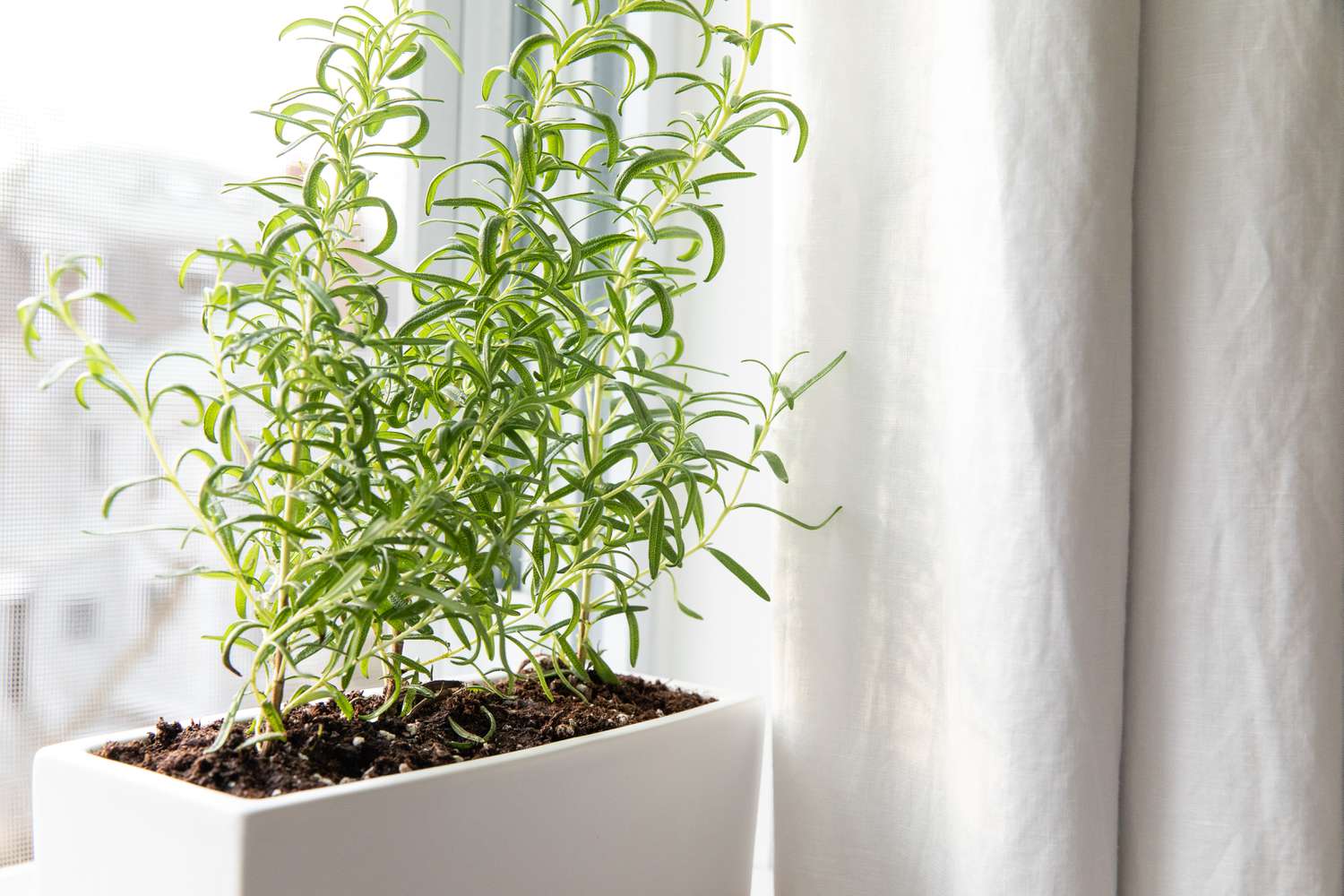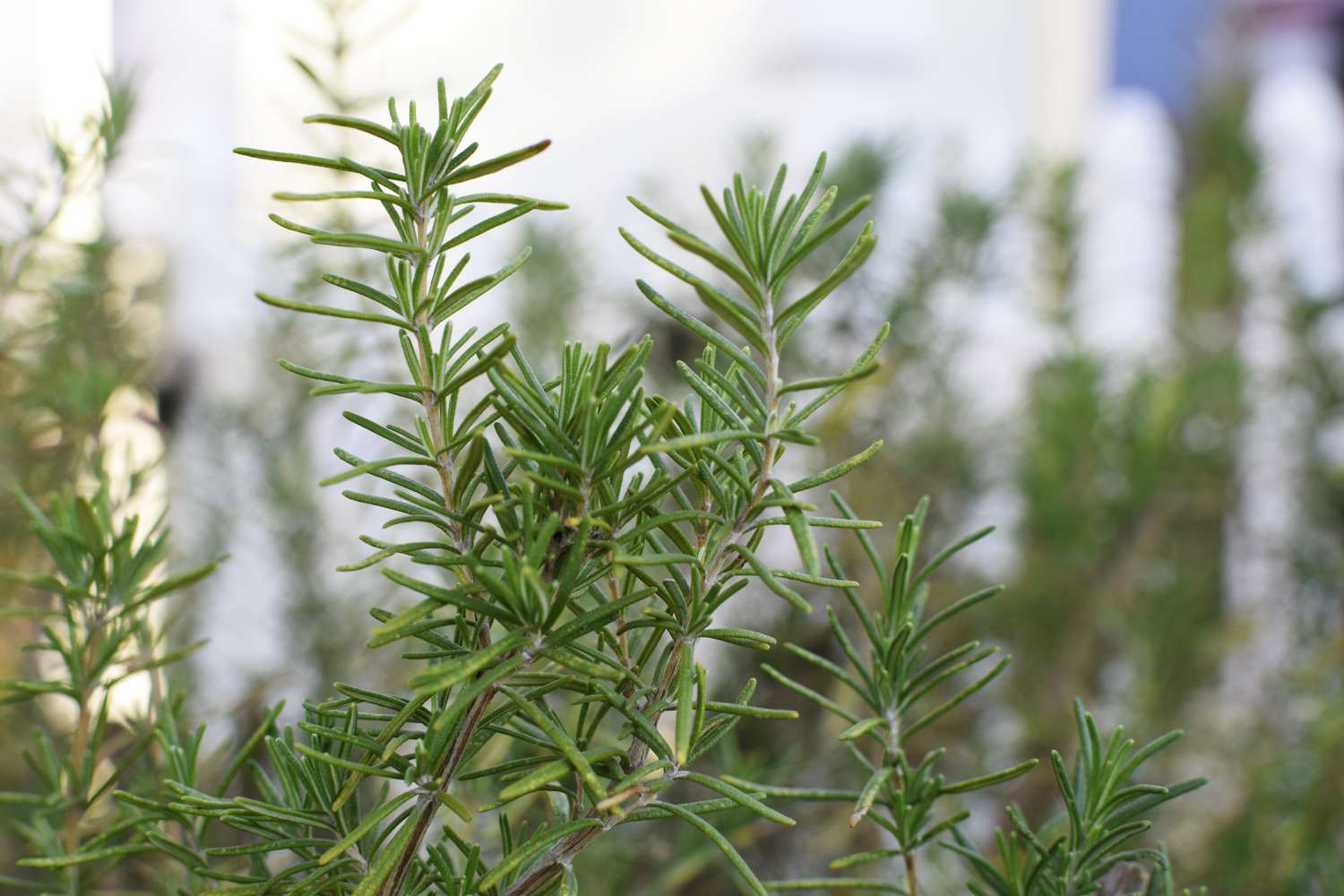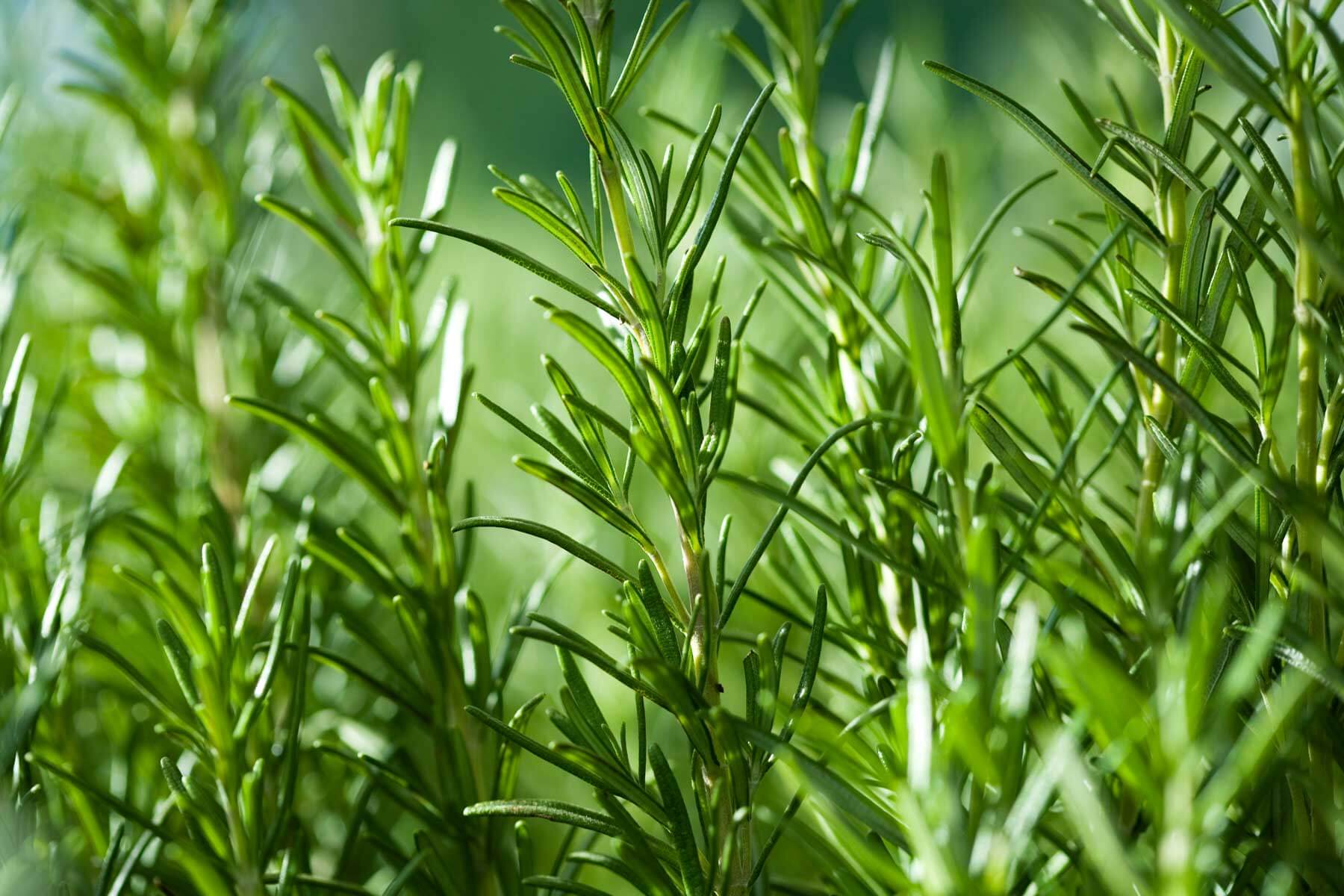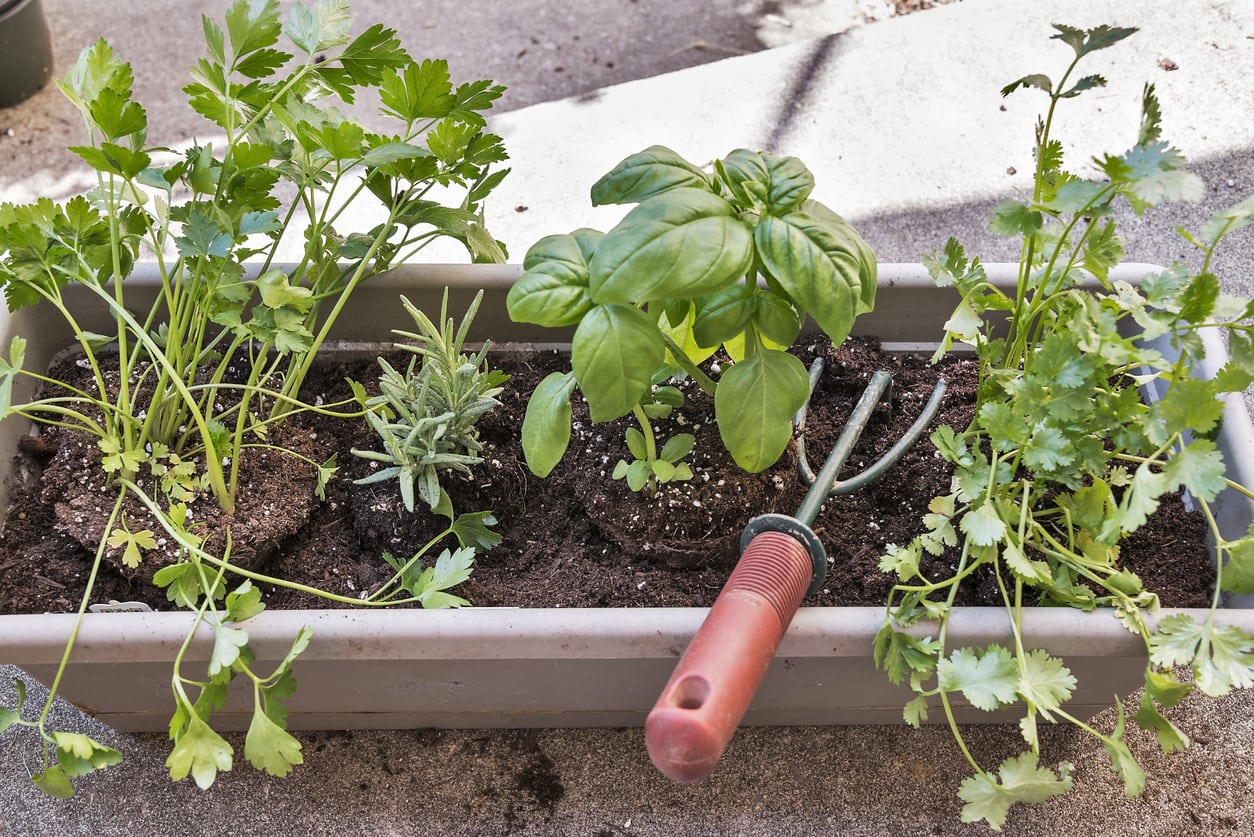Home>Types of Gardening>Edible Gardening>How To Revive Brown Rosemary Plant


Edible Gardening
How To Revive Brown Rosemary Plant
Published: January 29, 2024
Learn how to revive a brown rosemary plant with our expert tips for edible gardening. Get your herb garden thriving again!
(Many of the links in this article redirect to a specific reviewed product. Your purchase of these products through affiliate links helps to generate commission for Chicagolandgardening.com, at no extra cost. Learn more)
Table of Contents
Introduction
Understanding the Causes of Brown Rosemary
Rosemary is a beloved herb in the world of edible gardening, prized for its aromatic fragrance and culinary versatility. However, even the most experienced gardeners may encounter the disheartening sight of a brown, withered rosemary plant. This occurrence can be attributed to various factors, including environmental conditions, improper care, and pest infestations. Understanding the underlying causes of a brown rosemary plant is crucial in formulating an effective revival strategy. This article delves into the multifaceted approach to reviving a brown rosemary plant, encompassing essential steps and best practices to restore its vigor and lush greenery.
The following sections will provide comprehensive guidance on reviving a brown rosemary plant, covering crucial aspects such as watering and sunlight requirements, pruning and trimming techniques, soil composition and fertilization, as well as pest control and disease management. By addressing each of these components with care and attention to detail, gardeners can breathe new life into their struggling rosemary plants and witness a vibrant resurgence of growth and vitality.
Whether you are a novice gardener or a seasoned horticulture enthusiast, the journey to reviving a brown rosemary plant offers an opportunity to deepen your connection with nature and cultivate a thriving herb garden. Embracing the challenges and rewards of nurturing plants is an enriching experience, and the resilience of rosemary serves as a testament to the remarkable resilience of nature. Let us embark on this revitalizing venture, guided by knowledge, passion, and a touch of green-thumb magic.
Understanding the Causes of Brown Rosemary
When confronted with a brown rosemary plant, it is essential to investigate the potential causes behind its distress. Several factors can contribute to the browning of rosemary foliage, signaling an imbalance in the plant’s environment or care regimen. By identifying these underlying issues, gardeners can implement targeted solutions to address the root of the problem and facilitate the plant’s recovery.
One common culprit behind brown rosemary is inadequate watering practices. Rosemary plants thrive in well-draining soil and prefer slightly dry conditions, making them susceptible to root rot if exposed to excessive moisture. Conversely, prolonged periods of drought can lead to dehydration and subsequent browning of the foliage. Understanding the moisture requirements of rosemary is pivotal in maintaining its health and preventing the onset of discoloration.
Furthermore, insufficient sunlight can contribute to the browning of rosemary leaves. As a Mediterranean herb, rosemary thrives in full sunlight and requires a minimum of six hours of direct sun exposure daily. When deprived of adequate light, the plant may exhibit signs of stress, manifesting as brown or yellowing foliage. Ensuring that the rosemary plant is positioned in a sun-drenched location is crucial for its overall vitality.
In addition to environmental factors, nutrient deficiencies and imbalanced soil composition can impact the health of rosemary, leading to discoloration and diminished vigor. Poor soil drainage, alkaline pH levels, and nutrient depletion can all contribute to the browning of rosemary foliage. Understanding the specific nutritional needs of rosemary and the optimal soil conditions for its growth is imperative in addressing these underlying issues.
Lastly, pest infestations and diseases can instigate the browning of rosemary leaves. Common pests such as spider mites, aphids, and whiteflies can wreak havoc on the plant, causing discoloration and stunted growth. Additionally, fungal diseases, including powdery mildew and root rot, can manifest as brown patches on the foliage, signaling the presence of underlying health threats.
By comprehensively examining the potential causes of brown rosemary, gardeners can gain valuable insights into the specific challenges their plants are facing. This understanding forms the foundation for implementing targeted revival strategies, encompassing precise adjustments to watering routines, sunlight exposure, soil composition, and pest management. With a holistic comprehension of the underlying causes, the journey to reviving a brown rosemary plant becomes an informed and purposeful endeavor.
Steps to Revive a Brown Rosemary Plant
Reviving a brown rosemary plant requires a systematic approach that addresses its specific needs and challenges. By following a series of targeted steps, gardeners can effectively rejuvenate their struggling rosemary and foster its return to robust health and vibrancy. The following guidelines outline essential measures to undertake in the revival process, offering a roadmap to guide the plant back to flourishing greenery.
Assess the Plant’s Environment: Begin by evaluating the environmental conditions surrounding the brown rosemary plant. Ensure that it is positioned in a sunlit area with adequate air circulation, as well as well-draining soil that prevents waterlogging. Addressing any environmental inadequacies is crucial in creating an optimal setting for the plant’s recovery.
Inspect the Root System: Carefully examine the root system of the brown rosemary plant, checking for signs of root rot or dehydration. If the roots appear waterlogged or desiccated, consider repotting the plant in well-draining soil and adjusting the watering regimen accordingly to restore root health.
Prune Dead Foliage: Gently trim away any brown or withered foliage from the rosemary plant, promoting new growth and redirecting the plant’s energy towards healthy areas. Pruning also helps improve air circulation and light penetration, further supporting the plant’s recovery.
Adjust Watering Practices: Tailor the watering routine to meet the specific moisture needs of rosemary, allowing the soil to partially dry out between waterings. Avoid overwatering, which can lead to root rot, and monitor the plant’s response to the adjusted watering schedule.
Optimize Sunlight Exposure: Position the rosemary plant in a sun-drenched location, ensuring it receives at least six hours of direct sunlight daily. Adequate sunlight is essential for the plant’s photosynthetic processes and overall vigor, aiding in the revival of its lush green foliage.
Enhance Soil Nutrition: Consider amending the soil with well-balanced fertilizer formulated for herbs, providing essential nutrients to support the rosemary’s recovery and growth. Additionally, ensure that the soil pH is within the optimal range for rosemary cultivation, typically around 6.0 to 7.0.
Monitor for Pests and Diseases: Regularly inspect the rosemary plant for signs of pest infestations and diseases, addressing any issues promptly to prevent further damage. Implement organic pest control methods and, if necessary, treat the plant with targeted remedies to combat specific pests or diseases.
By diligently following these steps and tailoring them to the unique needs of the brown rosemary plant, gardeners can embark on a transformative journey towards its revival. Each measure plays a pivotal role in addressing the underlying causes of distress and nurturing the plant back to a state of flourishing vitality, ultimately celebrating the resurgence of verdant, aromatic foliage.
Watering and Sunlight Requirements
Proper watering and sunlight exposure are fundamental components of nurturing a healthy and vibrant rosemary plant. Understanding the specific requirements for water and sunlight is essential in supporting the plant’s growth and addressing the challenges associated with browning foliage. By adhering to tailored watering practices and optimizing sunlight exposure, gardeners can create an optimal environment for their rosemary’s revival and sustained well-being.
Watering: Rosemary thrives in well-draining soil and prefers slightly dry conditions, making it susceptible to root rot if overwatered. When reviving a brown rosemary plant, it is crucial to adjust the watering regimen to align with the plant’s moisture needs. Allow the top inch of the soil to dry out between waterings, ensuring that the roots receive adequate aeration and preventing waterlogged conditions. During the revival process, monitor the plant’s response to the adjusted watering schedule, striking a balance between hydration and soil drainage to support its recovery.
Sunlight: Sunlight is a vital catalyst for the growth and vitality of rosemary, as it fuels the plant’s photosynthetic processes and aromatic oil production. Position the rosemary plant in a sunlit location where it can receive a minimum of six hours of direct sunlight daily. Adequate sunlight exposure not only promotes the plant’s overall vigor but also enhances the intensity of its aromatic oils, enriching the culinary and aromatic qualities of the herb. Optimizing sunlight exposure is instrumental in rejuvenating the brown rosemary plant and fostering the resurgence of lush, green foliage.
By carefully attending to the watering and sunlight requirements of the brown rosemary plant, gardeners can create an environment that supports its revival and sustained well-being. These foundational elements form the cornerstone of the plant’s care regimen, contributing to its resilience and capacity for rejuvenation. Through mindful adjustments to watering practices and strategic positioning to optimize sunlight exposure, the journey to reviving a brown rosemary plant becomes a harmonious interplay of nurturing the plant’s essential needs and witnessing the revitalization of its verdant allure.
Pruning and Trimming
Pruning and trimming play a pivotal role in the revival of a brown rosemary plant, offering a transformative pathway to rejuvenating its lush greenery and promoting new growth. By delicately shaping the plant and removing withered foliage, gardeners can redirect its energy towards revitalization and encourage the emergence of vibrant, healthy shoots. The following insights delve into the significance of pruning and trimming as essential measures in the revival process, guiding the brown rosemary plant towards a flourishing resurgence of vitality.
Stimulating New Growth: Pruning enables gardeners to remove dead or discolored foliage, stimulating the plant to channel its resources into generating fresh, vibrant growth. By trimming away brown or withered sections, the plant can allocate its energy towards producing new shoots and foliage, fostering a rejuvenated appearance and renewed vigor. This process not only enhances the plant’s aesthetic appeal but also contributes to its overall health and resilience.
Improving Air Circulation: Trimming the brown rosemary plant promotes improved air circulation around the remaining foliage, reducing the risk of moisture-related issues and fungal diseases. Enhanced airflow minimizes the likelihood of stagnant humidity and creates an environment that is conducive to the plant’s recovery, preventing the onset of further stress or discoloration.
Shaping the Plant: Pruning allows gardeners to shape the rosemary plant, encouraging a compact and balanced form that enhances its visual appeal and structural integrity. By selectively trimming overgrown or unruly branches, the plant can achieve a harmonious and robust silhouette, reflecting its innate vitality and rejuvenated state.
Encouraging Aromatic Oil Production: Trimming the rosemary plant not only revitalizes its appearance but also stimulates the production of aromatic oils within the foliage. The act of pruning prompts the plant to intensify its aromatic qualities, enhancing the fragrance and flavor of the herb for culinary and aromatic applications. This aromatic resurgence adds a sensory dimension to the plant’s revival, further enriching its allure and utility.
Embracing the art of pruning and trimming as integral facets of the revival process empowers gardeners to orchestrate the rejuvenation of their brown rosemary plant with precision and care. By sculpting the plant’s form, stimulating new growth, and fostering an environment of renewed vitality, the transformative impact of pruning and trimming unfolds, culminating in the revival of a vibrant and flourishing rosemary specimen.
Soil and Fertilization
The soil composition and fertilization regimen are pivotal factors in the revival of a brown rosemary plant, profoundly influencing its nutrient uptake, root health, and overall vitality. By optimizing the soil structure and supplementing the plant with essential nutrients, gardeners can create an enriched growing environment that supports the plant’s recovery and fosters robust, verdant growth. The following insights delve into the significance of soil and fertilization as critical elements in the revival process, guiding the brown rosemary plant towards a revitalized state of flourishing greenery.
Well-Draining Soil: Rosemary thrives in well-draining soil that prevents waterlogging and promotes optimal root aeration. When reviving a brown rosemary plant, ensure that the soil is well-draining and amended with materials such as perlite or coarse sand to enhance its porosity. Well-structured soil facilitates the maintenance of healthy root systems and mitigates the risk of moisture-related issues that can contribute to the plant’s distress.
Optimal Soil pH: Rosemary flourishes in slightly acidic to neutral soil with a pH range of approximately 6.0 to 7.0. Assess the soil pH and make adjustments as needed to create an environment that aligns with the plant’s specific pH preferences. Maintaining an optimal soil pH fosters the plant’s capacity to absorb essential nutrients and promotes overall metabolic function, contributing to its revitalization.
Fertilization: Consider supplementing the brown rosemary plant with a balanced, organic fertilizer formulated for herbs, providing essential nutrients to support its recovery and sustained growth. Apply the fertilizer according to the manufacturer’s instructions, ensuring that it is distributed evenly around the plant and gently worked into the soil. The strategic application of fertilizer enriches the soil with vital nutrients, fortifying the plant’s resilience and contributing to its resurgence.
Organic Amendments: Incorporating organic matter such as compost or well-aged manure into the soil can enhance its fertility and structure, fostering a nurturing foundation for the brown rosemary plant’s revival. Organic amendments contribute to soil moisture retention, microbial activity, and nutrient availability, creating an environment that is conducive to the plant’s rejuvenation and sustained well-being.
By attending to the soil composition and implementing a tailored fertilization regimen, gardeners can orchestrate a transformative journey towards the revival of their brown rosemary plant. The harmonious interplay of well-draining soil, optimal pH levels, and nutrient-rich amendments forms the cornerstone of the plant’s enriched growing environment, fostering its resurgence and the emergence of luxuriant, aromatic foliage.
Pest Control and Disease Management
Effective pest control and disease management are integral components of reviving a brown rosemary plant, safeguarding it against potential threats and fostering its resurgence with resilience and vitality. By implementing targeted strategies to combat pests and diseases, gardeners can create a protective shield around the plant, enabling it to recover and thrive in an environment free from detrimental infestations and health hazards. The following insights delve into the significance of pest control and disease management as critical elements in the revival process, guiding the brown rosemary plant towards a state of renewed health and exuberant growth.
Identification of Pests and Diseases: Begin by meticulously inspecting the brown rosemary plant for signs of pest infestations and diseases, including the presence of aphids, spider mites, whiteflies, powdery mildew, and root rot. Identifying the specific threats allows for targeted and effective intervention, preventing further damage and supporting the plant’s recovery.
Organic Pest Control: Embrace organic pest control methods, such as the application of insecticidal soaps, neem oil, or horticultural oils, to combat common pests without compromising the plant’s well-being. These natural remedies offer a gentle yet potent approach to managing pest infestations, safeguarding the brown rosemary plant while facilitating its revitalization.
Disease Prevention: Create an environment that minimizes the risk of fungal diseases by ensuring proper air circulation, well-draining soil, and avoiding overhead watering. These preventive measures reduce the likelihood of powdery mildew and other fungal infections, fortifying the plant’s resilience and supporting its recovery from brown foliage.
Targeted Treatments: If the brown rosemary plant exhibits signs of specific diseases or persistent pest infestations, consider employing targeted treatments to address the underlying issues. Tailored remedies, such as copper fungicides for fungal diseases or insecticidal treatments for pest control, can effectively combat the threats and create an environment conducive to the plant’s revival.
Vigilant Monitoring: Regularly monitor the brown rosemary plant for any resurgence of pests or diseases, remaining vigilant in safeguarding its well-being throughout the revival process. Timely intervention and proactive management contribute to the plant’s sustained health and revitalization, fostering a thriving and resilient specimen.
By integrating comprehensive pest control and disease management practices into the revival process, gardeners can nurture the brown rosemary plant towards a state of renewed vitality and lush greenery. The strategic implementation of organic pest control, disease prevention, and targeted treatments forms a protective shield around the plant, allowing it to flourish and thrive in an environment that is free from detrimental threats and conducive to its resurgence.
Conclusion
The journey to revive a brown rosemary plant is a testament to the resilience of nature and the transformative power of attentive care and targeted interventions. As gardeners embark on this revitalizing venture, they are empowered to address the underlying causes of distress, create an optimal environment, and nurture the plant back to a state of flourishing vitality. Understanding the multifaceted approach to reviving a brown rosemary plant encompasses essential steps and best practices, from adjusting watering and sunlight exposure to pruning, soil enrichment, and pest control. Each measure plays a pivotal role in fostering the plant’s resurgence, celebrating the emergence of vibrant, aromatic foliage and the embodiment of its timeless allure.
Throughout the revival process, gardeners are invited to deepen their connection with nature, embracing the challenges and rewards of nurturing plants with knowledge, passion, and a touch of green-thumb magic. The art of reviving a brown rosemary plant transcends mere horticulture, offering an enriching experience that fosters resilience, patience, and a profound appreciation for the beauty of botanical rejuvenation.
As the brown rosemary plant responds to the diligent care and targeted interventions, it embodies the remarkable capacity for renewal and the enduring cycle of growth and vitality. The journey to revive a brown rosemary plant is a testament to the transformative impact of nurturing and the profound beauty of witnessing nature’s resilience unfold in vibrant greenery and aromatic splendor.










